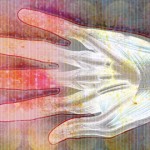Carpal tunnel syndrome (CTS) is a common entrapment neuropathy. It is diagnosed first by case history and then by electrodiagnostic tests. Most patients have characteristic sensory signs and symptoms that are restricted to the area innervated by the median nerve. Some patients, however, experience non-classic, extra-median spread of symptoms including those involving the fifth digit.
These non-classic patients have been well documented in the literature. In past studies, patients with CTS have described symptoms in the ulnar nerve territory, as well as whole-hand complaints.
In 1999, researchers Stevens et al found that CTS symptoms were most often reported in the median and ulnar digits, but were also found in the median digit alone and in a glove distribution.1 They evaluated 244 patients with sensory symptoms in the hand and documented slowing of median nerve conduction at the wrist. They also found that pain or paresthesia was proximal to the wrist in approximately one-third of hands.
Although the cause of the spread of CTS symptoms is unknown, some investigators have suggested it may be due to involvement of ulnar nerve fibers. Regardless of whether the symptoms are classic or non-classic, patients with CTS complain of nocturnal parasthesia, as well as discomfort while driving and holding a phone.
Some neurologists question whether patients with non-classic CTS will experience the same benefit from surgery as patients with classic CTS.
Researcher Franka Claes, MD, a neurologist at Vlietland Hospital in The Netherlands, and colleagues addressed this question in a recent study of patients with complaints of CTS signs and symptoms not exclusively confined to the median nerve territory.2
Their study included patients with case histories suggestive of CTS who were referred to the Vlietland Hospital outpatient clinic where they were evaluated by expert examiners for clinical and electrodiagnostic criteria for CTS. The patients received a complete neurological examination. Blind electrodiagnostic tests were performed according to the American Association of Neuromuscular & Electrodiagnostic Medicine guidelines by an experienced neurophysiologist.
Patients were informed of the study and provided the option of either conservative treatment or surgical decompression of the median nerve of the carpal tunnel. The investigators identified 228 patients (131 with classic CTS and 97 with non-classic CTS) who opted for surgical treatment. All of the patients met the electrodiagnostic criteria for CTS. A neurosurgeon met with the patients one and four weeks post-surgery to remove stitches and manage wound healing.
Surgical outcome was determined based upon a sensory severity score (SSS) and functional status score (FSS) measured by patients’ response to questionnaires. The investigators reported no difference in outcome (>80% response rate) between patients with traditional symptoms and those with extra-median spread of complaints. Seven to nine months after treatment, they found no difference in improvement of SSS or FSS between the two groups.
The investigators also noted that patients with atypical sensory complaints are not necessarily atypical or rare. “Our suggestion is to refrain from [using such] terms as classic or non-classic CTS,” wrote Claes and colleagues in their discussion. They went on to state that patients with atypical symptoms should receive the same treatment as patients presenting with typical CTS and, thus, should be offered surgical treatment. (posted 9/19/14)
Lara C. Pullen, PhD, is a medical writer based in the Chicago area.
References
1. Stevens JC, Smith BE, Weaver AL et al. Symptoms of 100 patients with electromyographically verified carpal tunnel syndrome. Muscle Nerve. 1999:22(10):1448–1456.
2. Claes F, Kasius KM, Meulstee J, et al. Treatment outcome in carpal tunnel syndrome: Does distribution of sensory symptoms matter? J Neurol Sci. 2014:344(1-2):143–148.


